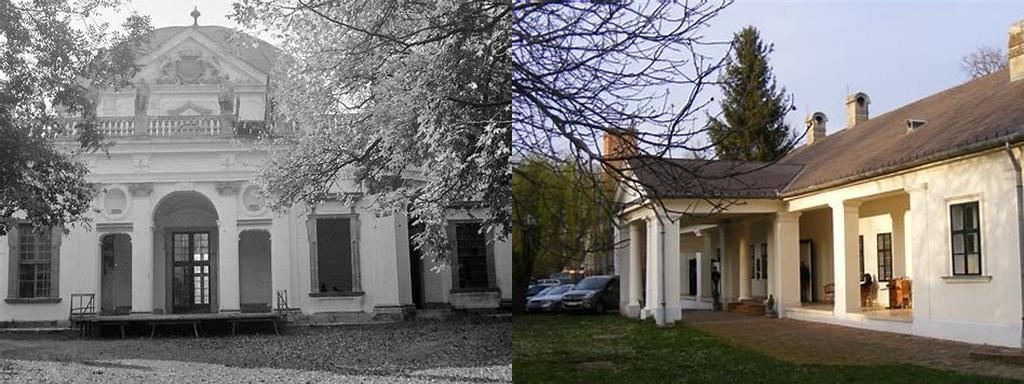
Munk-kúria sits quietly in the heart of Hernádnémeti, a modest little town tucked away in the Hungarian countryside. Unlike the sprawling palaces and grand castles found peppered across the country, this mansion manages to intrigue in a gentler, more personal way. When you first set eyes on Munk-kúria, you might not even think of it as a “mansion” in the grandiose sense. But sometimes, history chooses its stage in the most subtle nooks. The building stands resolute, wrapped in trees and a slightly wild garden, concealed from the busy world and offering a slice of time lost to the everyday rush.
The story of Munk-kúria can be traced back to the first half of the 19th century. At a time when Hungary was pulsing with reformist ideas and shifting nobility, stately manors such as this one were the beating hearts of rural communities. The mansion was commissioned by the notable Munk family — one of those landed families whose presence and decisions shaped the social and economic fabric of the entire village for generations. Unlike some of the “fairytale” castles in this region of Borsod-Abaúj-Zemplén County, the Munk Mansion was not meant for show. Its elegant yet restrained classicist design echoes a sense of understated dignity, with graceful arched windows, a balanced façade, and preserved period features that have somehow dodged both neglect and overzealous modernisation.
Stepping inside is where the atmosphere truly cloaks you. The interior breathes with history — uneven wooden floors creak underfoot, sunlight dapples across old wall panelling, and you might catch a whiff of musty books or inherited linen. This is a home that remembers children’s laughter, earnest conversations about harvest, and perhaps even secrets whispered during troubled times. Some say, if you stand quietly in the main parlour, you’ll hear echoes of musical evenings — folk songs and waltzes from another era swirling through the dust motes. If you look closely, you’ll spot original architectural elements: those delicate stucco rosettes decorating the ceilings, remnants of hand-painted doors, and noble family portraits in somber oils gazing steadily from the walls.
Part of what makes Munk-kúria fascinating is its lived-in resilience. The Munk family endured both the prosperity and upheaval that swept through Central Europe. After surviving land reforms, world wars, and shifting borders during the chaotic course of the 20th century, the mansion adapted to new times. There were years when it housed a school, and other chapters when it served as a gathering point for local community events. These layers of usage have only infused it with more personality. During the socialist years, many such mansions faced ruin or were stripped of their character, but in Hernádnémeti, locals kept an affection for their historic house. With every change in purpose, bits of the building’s personality remained: faded wallpaper from the 1950s alongside 19th-century mouldings, graffiti by children hidden behind a wardrobe, a safe in the wall thick with mystery and speculation.
A big part of the experience of visiting Munk-kúria is walking through the grounds. The park is less a sculpted garden and more a patchwork of wild beauty. You’ll find fruit trees laden in autumn, an overgrown path where butterflies flit, wildflowers scattered near the hedge. There’s a melancholy here, evocative and gentle, especially if you catch the light at dusk. Sometimes local artists set up easels to paint the peeling façade, or culture enthusiasts gather for a picnic beneath the shadow of centuries-old chestnuts. It’s easy to imagine children of the mansion once racing across these lawns, or 19th-century guests strolling arm in arm after dinner, washing under the trees in the heat of summer.
For those interested in heritage and architecture, this mansion is like a living museum — but without the fussiness and formality that sometimes dulls historical sites. The mansion sometimes opens for guided tours led by passionate local historians, each eager to share obscure tidbits and family legends passed down through generations. There are few places where you can see the interplay between social history, family drama, architectural trends, and local folklore woven together so intimately. Stories of the Munk family — stern patriarchs, rebellious daughters, wartime survivors — surface in casual anecdotes, accompanied by photographs or handwritten letters preserved in the attic or shared over a cup of coffee.
Ultimately, what sets Munk-kúria apart is its air of authenticity. You won’t find crowds or carefully curated exhibits here. Instead, you’ll wander in a place that still breathes with the rhythms of its past: a house that finds purpose even in slower years, preserved in the memories and daily life of Hernádnémeti. To visit the Munk Mansion is to walk into a living memory, an honest corner of rural Hungary where history quietly endures and surprises, around each sun-warmed corner, in the crackle of iron gates, and in the nodding of wildflowers at your feet.





